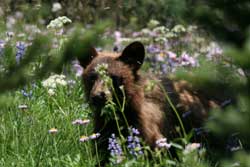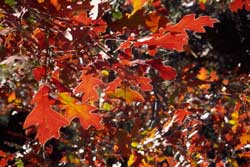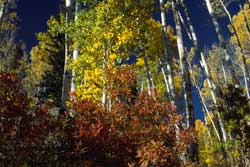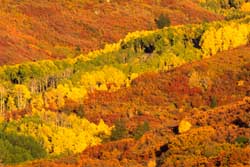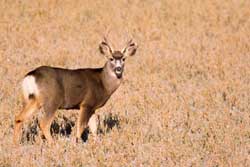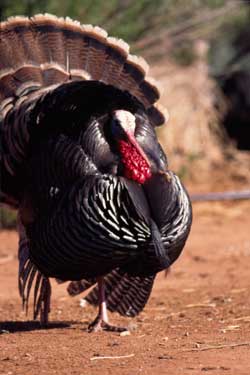As summer rolls out of its monsoon mentality, the La Sal Mountain’s foothills remind us of the seasonal queue. Transitioning from the lush greens of this particularly wet summer into the fiery reds and gold of fall, there is no better place to participate in this process than the oak brush that skirts the mountain.
Though far from linear, the oak-dominated mountain brush community divides the pinyon-juniper woodlands from the higher elevation forests of ponderosa pine, quaking aspen and spruce-fir. Though the term “oak” often conjures up images of massive trees, here stunted thickets of Gambel’s oaks rarely reach significant heights. One would not confuse these trees with the Druid-inspired woodlands of ancient Ireland or England. The Gaelic word for oak (Duir) inspired the name of the Druids or “the men of oaks.”
In Europe, oak groves were considered sacred ground, an observation made by early Christians as they built their churches in these ancient groves to create a transition from ancient beliefs to Christian worship. Roman, Greek, Celtic and Teutonic tribes held oaks in high esteem as they considered these plants to be sacred to some of the most powerful gods like Zeus, Jupiter and Thor. Ancient kings decorated themselves with crowns made of oak leaves to signify their godlike power on earth. The tree’s longevity and toughness symbolized strength and endurance to both ancient and modern worshippers.
Here in southeastern Utah the Gambel’s oak (Quercus gambelii) is the dominant oak found in dry valleys and slopes of the mountain foothills. Found growing mostly between 4,900 to 9,200 feet in elevation – with a high record of 10,200’ – this oak covers about 9.3 million acres across the western United States. Named in honor of William Gambel (1821-1849) a naturalist who collected plants in the Sante Fe area and probably passed through the Moab area on his journey to Colorado and California. Unfortunately, Gambel contracted typhoid fever after helping some sick miners in the Sierras on a second trip west and died soon after.
Gnarled forms of Gambel’s oak often create dense thickets that may be punctuated by other shrubs of this mountain community such as serviceberry, mountain mahogany and wild rose. The density of the oaks is due to reproduction by vegetative sprouting versus seed sprouting.
The base of the oak’s trunk is swollen and often covered by leaf litter or soil. Known as the lignotuber, this base contains hundreds of dormant buds capable of sprouting after a major disturbance. In addition to their deep taproots, the trees send out rhizome runners just beneath the soil surface. These runners also bear buds that become active after a major stress - fire or intense foraging pressure – breaks down the inhibiting hormones and allows the buds to sprout.
Gambel’s oaks are important as soil stabilizers in watersheds and for providing wildlife habitat. Numerous resident and migratory bird species nest and forage within the oak groves, either feeding on seeds of understory species or consuming insects on the oak’s foliage. Green-tailed and spotted towhees, western scrub jays, Virginia’s warblers, long-eared owls and black-billed magpies are several of the 187 species of birds recorded utilizing these oak woodlands. Other species that rely upon the seasonal acorn crop are wild turkeys, mule deer, elk and black bears. There is nothing like exploring these woodlands and hearing the thrashing of large ungulates or carnivores from somewhere within the protective confines of the groves.
But as September rolls through the mountains, the transition of fall foliage marks its passage. From verdant green to burnt sienna, the foothills explode into a mosaic of Crayola® colors. Maybe those ancient oak worshippers also had a sense of appreciation; a worthwhile endeavor still enjoyed by modern visitors to the mountain’s foothills.



